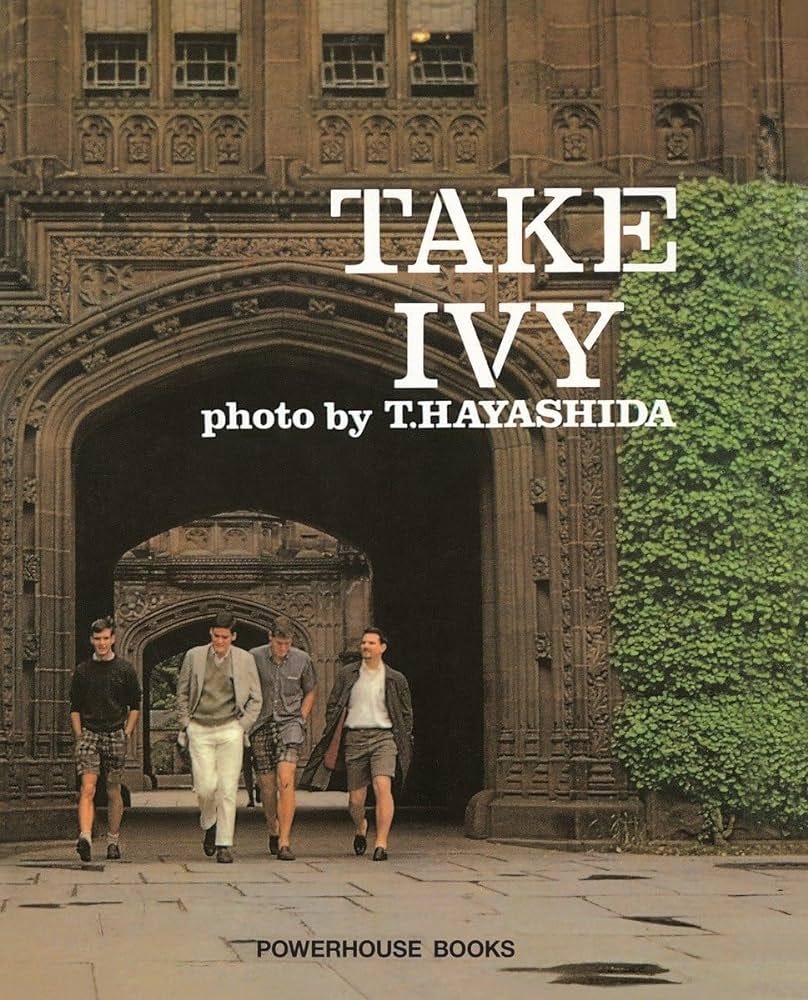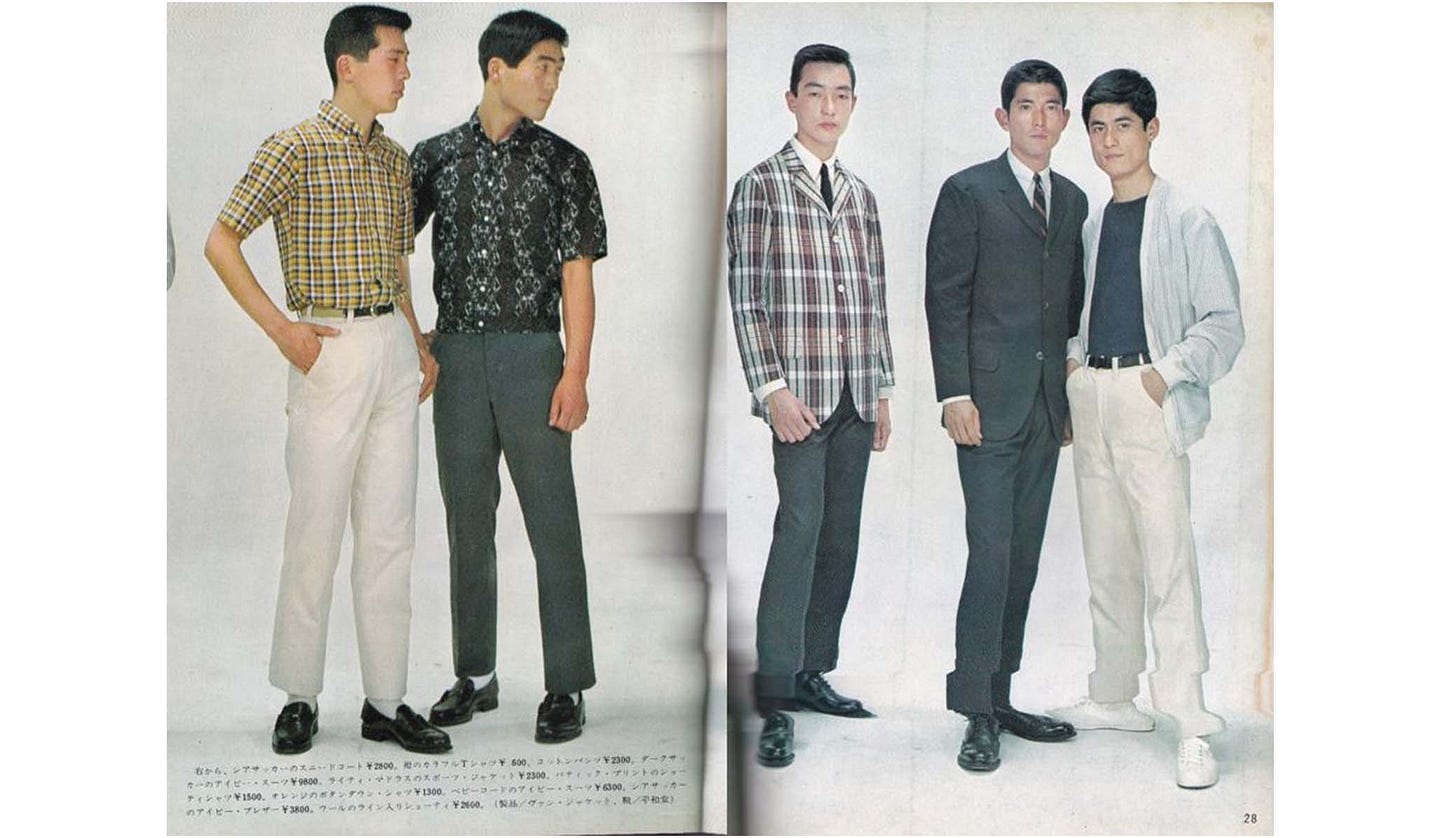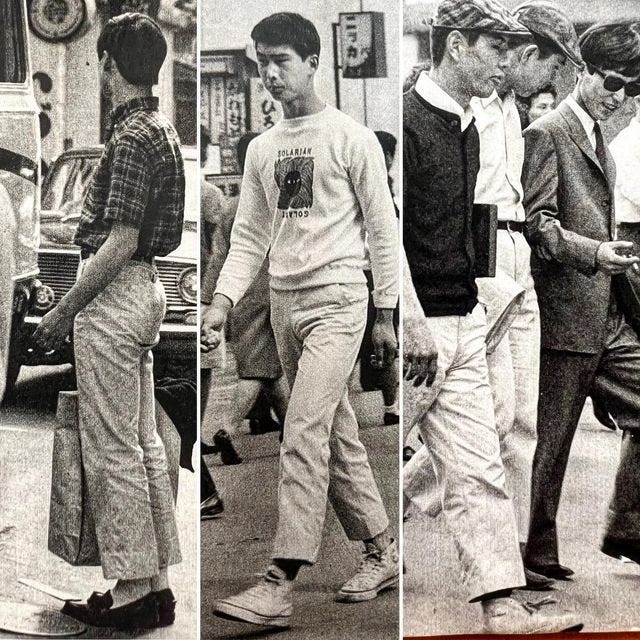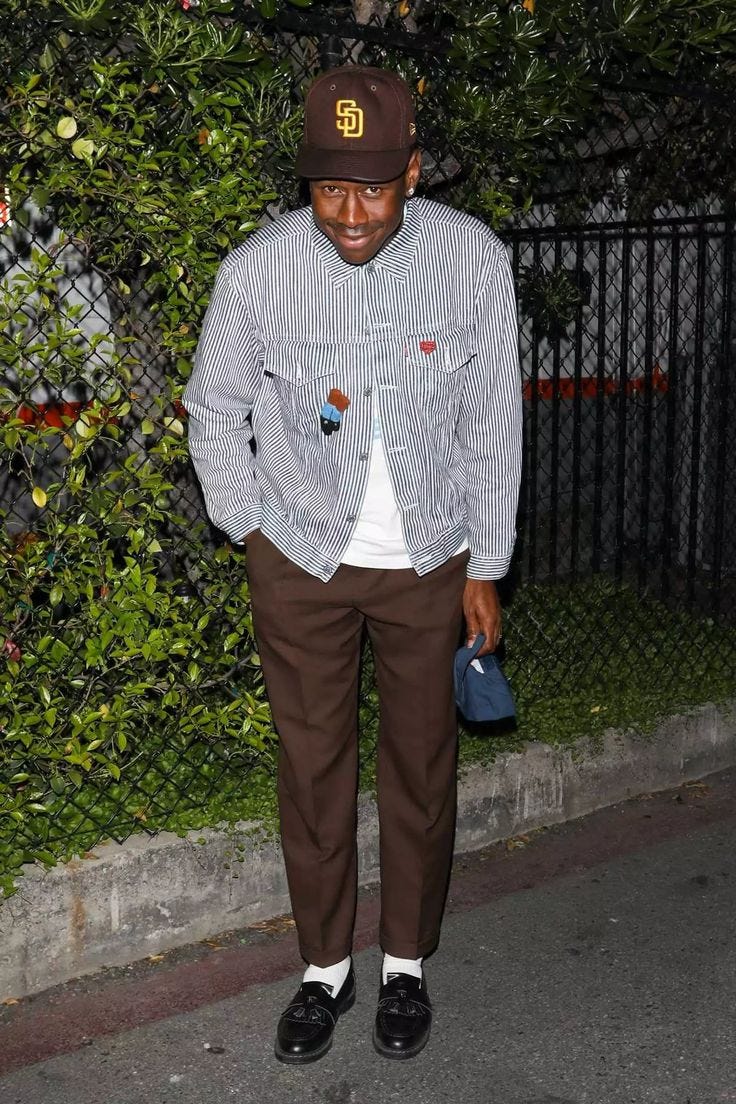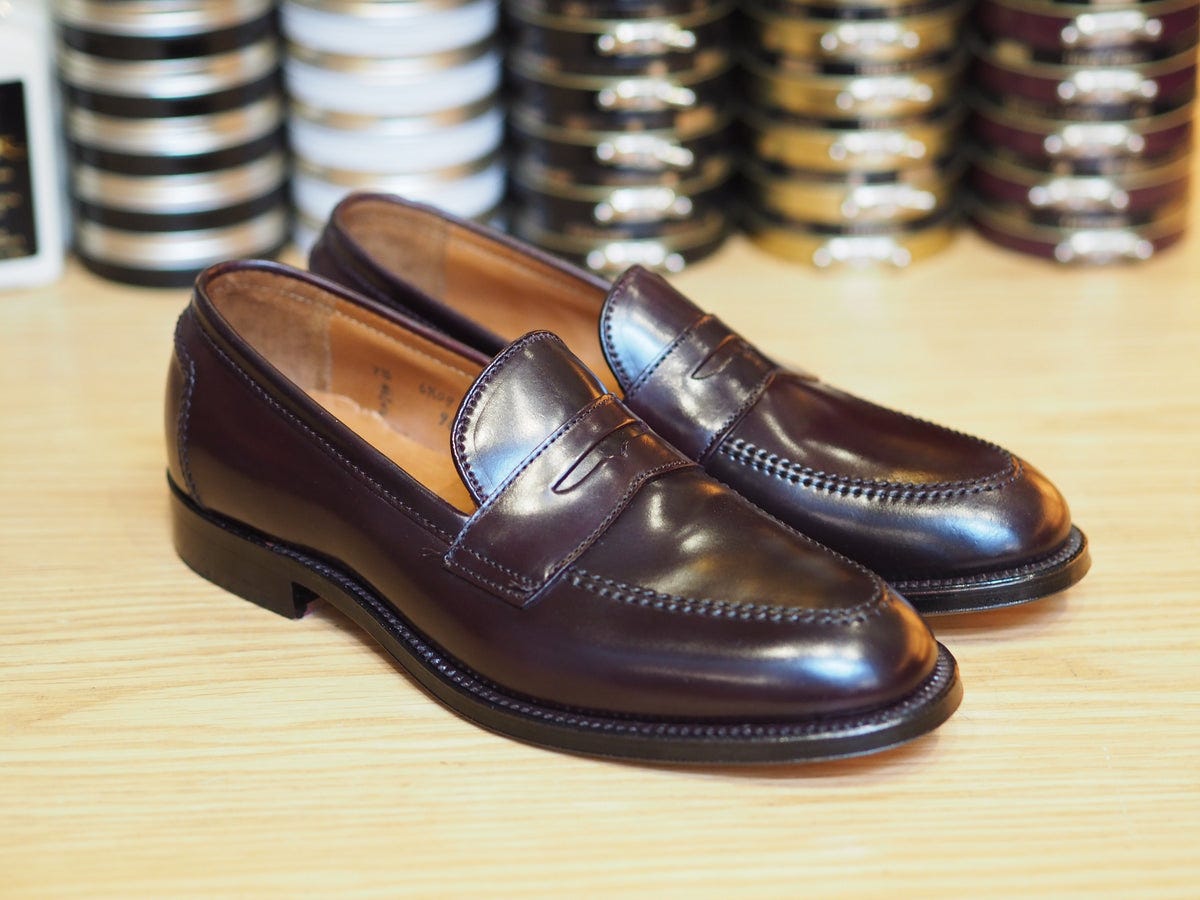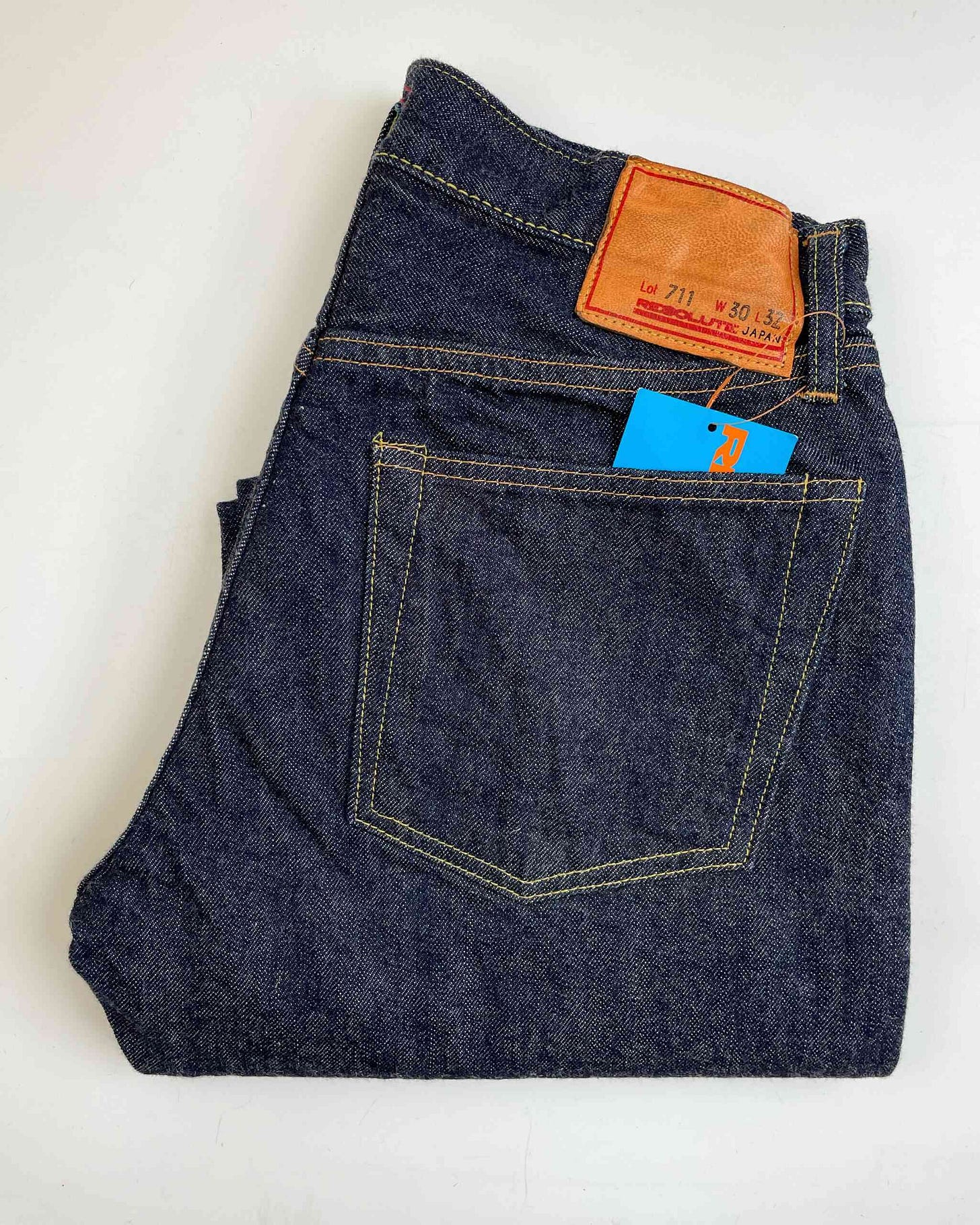Take Ivy? Why Bother?
Clothes, Culture, and the Ivy Connection
Style is not just what you wear—it's how you wear it. Ivy, to me, isn't just a look—it's a mindset, a way of approaching life with confidence and authenticity.
Clothes are often seen as a necessity. For most people, they’re just something to put on for convenience, comfort, or conformity. But for those of us who appreciate menswear, clothes represent so much more—they embody personal connection, choice, and mindset.
I’ve always believed that dressing well goes beyond appearances. It has a profound impact on how we feel and carry ourselves. For me, this connection is deeply tied to Ivy Style. When I wear Ivy, I’m not putting on a uniform; I’m embracing a legacy. The collegiate look speaks to me because it’s grounded in authenticity—smart yet relaxed, confident yet unpretentious. It’s not just about the clothes but the mindset and charm that come with them.
As the year winds down and the temperature dips, it's the perfect time to reflect on how we embrace style and the stories we tell through our clothing.
I’m not sure I remember exactly when I first embraced Ivy Style, but I think that’s just it for many of us. Its timelessness means that no one really notices when they started dressing Ivy because, for many, it’s always been there. Over the years, I’ve tried other styles that came with strict rules to follow. But what I appreciate most about Ivy is its flexibility. Of course, there are gatekeepers, but they’re the exception. For the most part, Ivy has become so global that it transcends a single culture. Brands, whether they admit it or not, will always look to Ivy Style for inspiration, whether it’s “in fashion” or not. But remember—it’s Ivy Style. Style never goes out of fashion, but fashion goes out of style. It’s not about following trends at all; it’s the opposite.
This connection becomes even more intriguing when you consider how Ivy Style transcended borders, especially its journey to Japan after World War II. At a time when much of Japan was rebuilding after the devastation of war, America’s influence was both inspiring and complicated. The allies occupied Japan, bringing not only political change but cultural exports—one of which was Ivy Style.
The Japanese Reimagining of Ivy
While America is the birthplace of Ivy Style, the Japanese played a monumental role in preserving and redefining it. Their meticulous attention to detail and cultural reinterpretation have shaped the Ivy we know today. The fascination with Americana in Japan traces back to the post-war era, where jazz, Hollywood, Coca-Cola, and fashion began weaving into Japanese life. Ivy Style became a cornerstone of this movement, known locally as Ametora—a blending of "American traditional" with Japanese sensibilities.
Brands like Van Jacket, founded by Kensuke Ishizu in 1951, were early adopters, taking inspiration from American labels like Brooks Brothers and J. Press. By the 1960s, Ivy Style had become aspirational for groups of sharply dressed young men, particularly in Tokyo’s Shinjuku district. But their bold fashion choices weren’t without consequence.
In the early 1960s, many of these Ivy enthusiasts were arrested simply for dressing in "outlandish" American-inspired styles. In the run-up to the 1964 Tokyo Olympics, authorities aimed to clean up Japan’s image, targeting those who strayed too far from traditional norms. It’s fascinating to think about how style, often dismissed as superficial, could become such a powerful cultural statement.
Despite the backlash, Ivy flourished. The release of Take Ivy in 1965—a photobook by Teruyoshi Hayashida—played a crucial role in cementing Ivy as a global phenomenon.
The Take Ivy Phenomenon
Take Ivy offered Japanese audiences a curated glimpse into Ivy League campuses, capturing the effortless elegance of American students. It wasn’t just about the clothes; it was about the lifestyle they represented. But here’s the twist: much of Take Ivy wasn’t entirely authentic. The images were staged to create an aspirational ideal, not an accurate portrayal of everyday campus life.
This curated fantasy wasn’t propaganda in a sinister sense. Instead, it was designed to inspire—a vision of American confidence and cool modernity that resonated deeply with Japanese audiences. And yet, Japan didn’t merely imitate Ivy—they reimagined it. By blending its traditions with their own cultural nuances, they made it uniquely theirs.
Why Ivy Still Resonates
Ivy Style isn’t just about clothes—it’s about confidence, creativity, and adaptability. The snowball effect of its global adoption has kept it alive, with each region adding its own perspective to the mix. What we’re exposed to—be it climate, culture, or personal history—shapes how we perceive and present Ivy.
For me, that personal connection started young. My love of ties was sparked by James Bond, who always embodied effortless elegance. As a child, I was given a black clip-on tie by my grandparents, and I wore it everywhere. That quirky introduction to menswear stayed with me, shaping how I view style today.
This blend of personal connection and cultural influence is what makes Ivy Style so enduring. Tyler, the Creator, for example, has redefined Ivy by mixing it with his own influences, proving that style is about self-expression, not conformity.
Making Ivy Your Own
At its core, Ivy Style is a mindset—one that honours tradition while embracing individuality. It’s not about rigid rules but about taking something timeless and making it your own. Whether you’re wearing a vintage blazer, perfectly knotted tie, or loafers, the essence of Ivy lies in how it makes you feel: confident, creative, and connected to a legacy that spans generations and cultures.
I’ve hinted at this before, and so have many of the people I’ve interviewed for this blog. But my advice is simple: get the basics. A few oxford cloth button-downs, a couple of pairs of chinos, loafers—and then add the statement pieces such as blazers, trench coats, and rotate it all around. Then, add the accessories—caps, watches, socks. People will think you have a far bigger wardrobe than you actually do. But really, you’re just wearing lots of classic items that pair effortlessly with each other. You’re creating a tonne of different colour palettes, which is key.
Some Key Pieces to Build Your Ivy Wardrobe
Here are a few essential items that will set the foundation for your Ivy-inspired wardrobe:
Kamakura Shirts - Oxford Cloth Button Down (Vintage Ivy Collection)
Founded in 1993 by Yoshio Sadasue and his wife Tamiko in the city of Kamakura, Japan, Kamakura Shirts has become renowned for its dedication to craftsmanship and timeless design. Their Oxford Cloth Button Down shirts from the Vintage Ivy Collection, created in collaboration with Ivy Style author Graham Marsh, take inspiration from the Ivy League schools of the 1960s. Known for their exceptional quality and perfect fit, these shirts represent the essence of Ivy Style—authentic, refined, and versatile. Whether worn with chinos or denim, they offer a foundation for a classic Ivy wardrobe.
Alden - Penny Loafers
Established in 1884 in Massachusetts, Alden has been crafting exceptional footwear for over a century. Known for their high-quality construction and timeless design, Alden’s penny loafers are the epitome of American footwear. These shoes pair perfectly with anything from jeans to chinos, offering both style and durability.
Resolute 711 - One Wash Jeans
Inspired by late 50s Levi’s, the Resolute 711 One Wash jeans combine the best of vintage American denim with Japanese craftsmanship. Made from high-quality indigo selvedge denim, they feature a slightly thicker straight cut and a button fly. The result is a durable, versatile pair of jeans that captures the essence of rugged Ivy style.
J. Press - Harris Tweed Olive Herringbone Sport Coat
J. Press is a classic American brand known for its timeless, Ivy-inspired designs. Their Harris Tweed Olive Herringbone Sport Coat is crafted from 100% Harris Tweed fabric woven in Scotland. With its natural shoulder and soft construction, this sport coat embodies Ivy sophistication and pairs well with any of your favourite shirts or trousers.
Buzz Rickson - Original-Spec Chinos
Inspired by 1940s-50s military chinos, Buzz Rickson’s Original-Spec Chinos combine vintage authenticity with a tailored, modern cut. With a zip fly, slightly lower rise, and a more refined fit than traditional WWII-era chinos, these versatile pants are perfect for dressing up or down, offering both comfort and style.
As I reflect on how Ivy Style has shaped my own approach to menswear, I’m reminded that style isn’t just about what’s new or on-trend—it’s about personal expression and connection.
Whether you’re building your wardrobe with the essentials or adding statement pieces, Ivy offers a timeless framework to make your own. And in that process, you create something lasting and meaningful.
The beauty of Ivy Style is its ability to evolve, allowing each wearer to make it their own. So, whether you’re stepping into a vintage blazer or pairing chinos with a new pair of loafers, remember: Ivy isn’t just about following trends. It’s about making a statement that’s uniquely yours.




